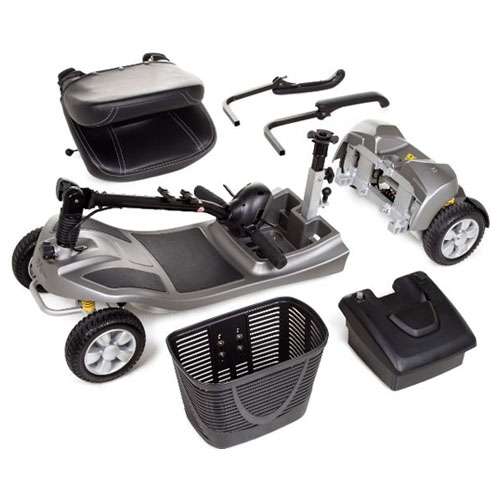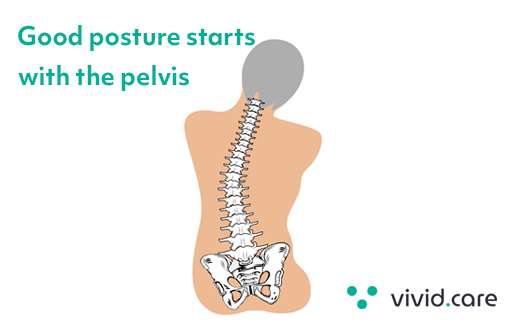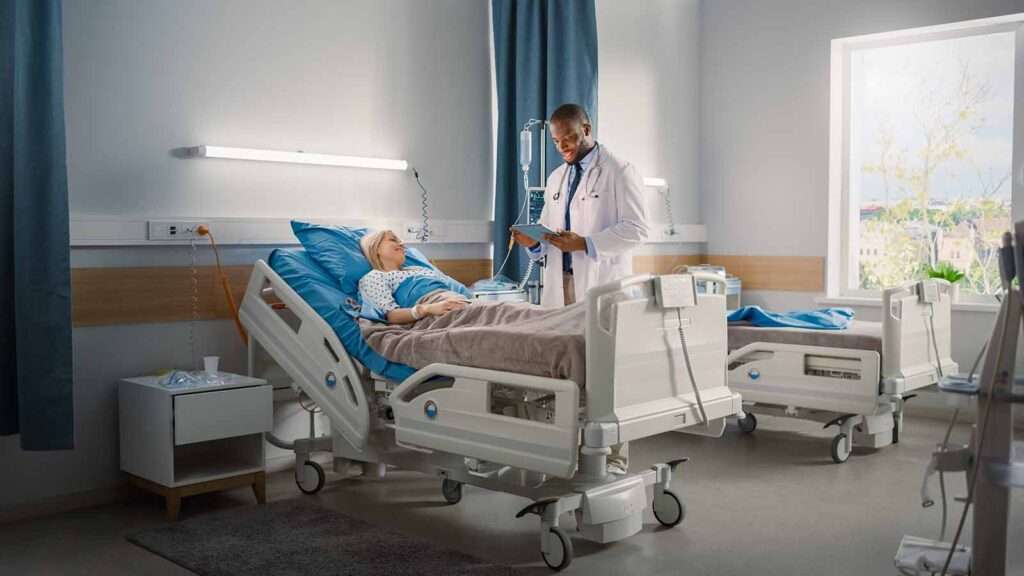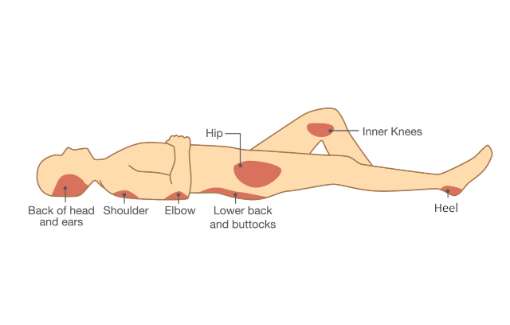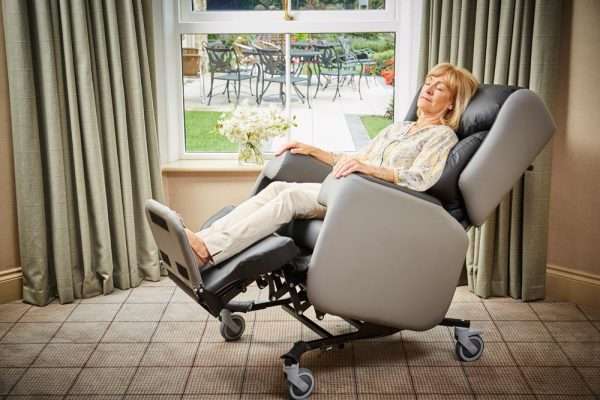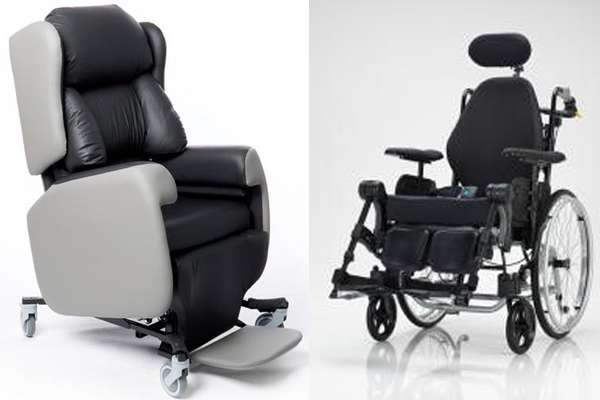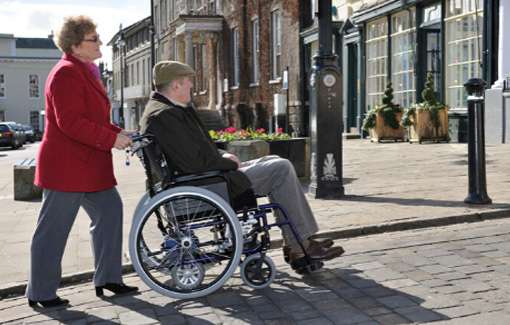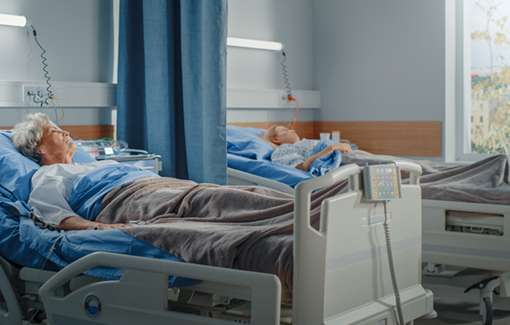Although there is a mobility scooter to suit everyone’s needs, it can be quite difficult when choosing the correct option. There are a variety of features and things to look out for, so we’ve written this mobility scooter guide to help people understand a little more them and the jargon surrounding them.
Jump straight to…
Types of Scooters
You may have already noticed that mobility scooters are ‘classed’ based on their level of power and speed. Typical mobility scooters are usually class 2 or class 3.
Class 1 actually applies to equipment like manual wheelchairs.
Class 2 refers to electrically powered scooters that are for use on the pavement, and have a maximum speed of 4mph. These models can be used pedestrian and zebra crossing, but cannot travel on the road itself.
The great thing about class 2 scooters is that they are typically more lightweight and can easily be fit into the back of the car. Some can even be dismantled for easier storage.
This makes class 2 scooters the perfect option for those who are looking for something to use on short trips every so often.
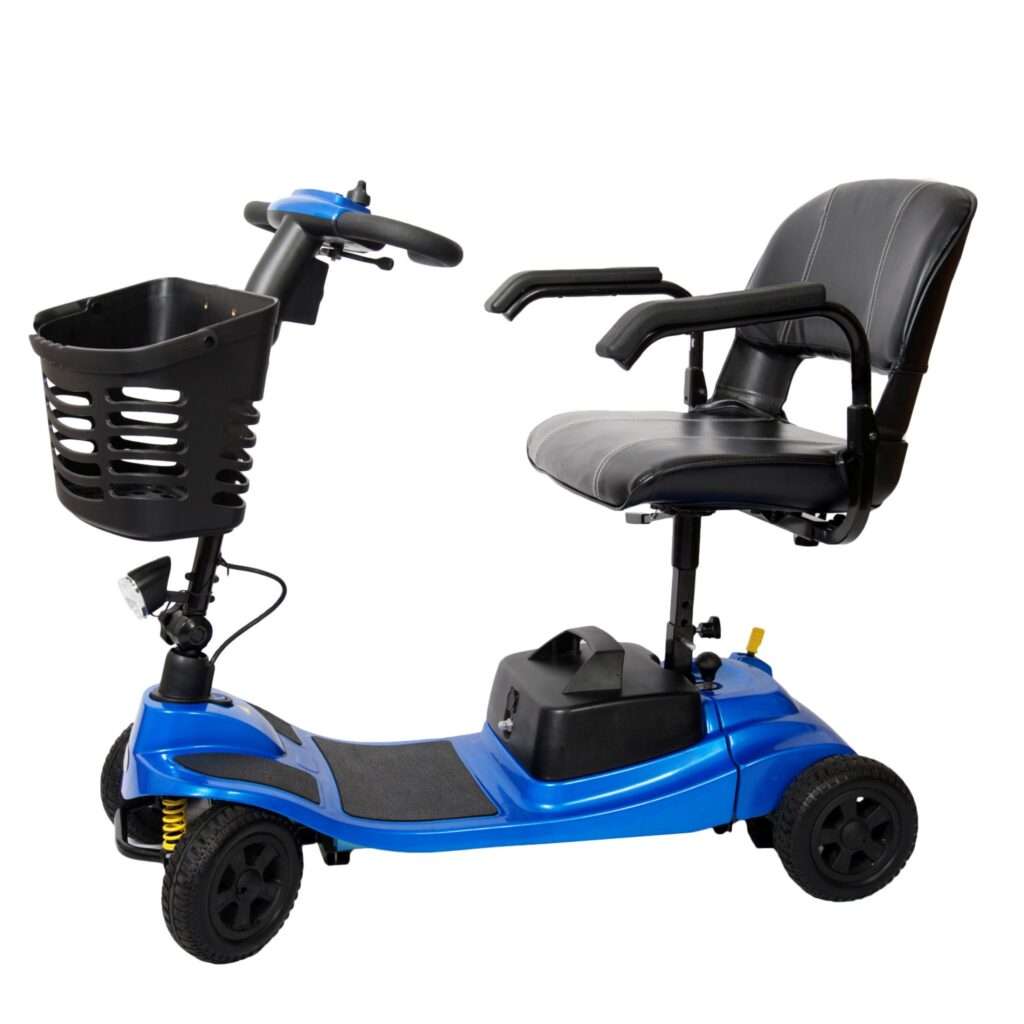
Class 2 scooter
Class 3 scooters can be used on the road, and therefore have a maximum speed of 8mph. That being said, you must obey the limit of 4mph if travelling on a pavement.
There’s usually a mechanism or some kind of switch built-in on a class 3 scooter that will help change speeds. Because a class 3 is road-worthy, it must have a horn, a rear-view mirror, emergency hand brakes, headlights, rear lights, and indicators.
Class 3s aren’t subject to road tax, and they don’t need an MOT or insurance. They’re bigger and more robust that class 2 models, and can usually travel longer distances.
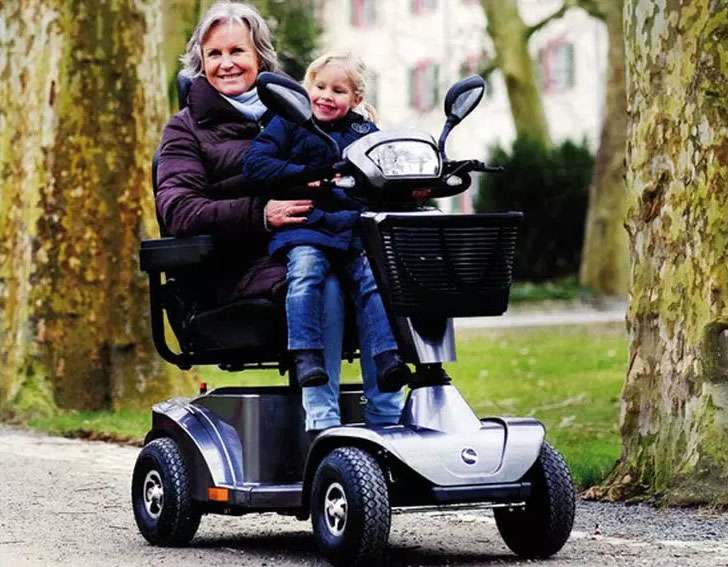
What to Consider when Choosing a Scooter
The first thing to think about is where and when you’re wanting to use your scooter. This will help you determine which class of scooter to be looking at.
For example, if you’re planning on using your scooter for quick trips to the shops, or to take with you on day trips, then a class 2 would be better. However, if you’re wanting to make regular, lengthy trips, then a class 3 might be best.
The 3 things we suggest you consider first are:
Weight: The first thing to look at is the user’s weight. All mobility scooters will have maximum user weights, so the person’s weight needs to be taken into consideration. A heavier individual may need a class 3 scooter.
Transportable: You should also think about whether or not you want your scooter to be portable. Are you wanting to pack it down and put it in the boot of the car? Then a smaller scooter (probably a class 2) will be more appropriate. In order to save weight on the model, the seat may have less cushioning and therefore be less comfortable.
Environment: It’s also worth thinking about where you plan to ride your scooter. If you know you’ll be driving over rough terrain, then a class 2 model may not be suitable due to its low height from the ground. Mobility scooters also have a maximum gradient, so if you are travelling around a hilly area, then you’ll need a bigger gradient capacity. Generally speaking, larger scooters have larger maximum gradients.
Batteries
Mobility scooters run on batteries, and they usually use two 12 volt rechargeable units. The size of the batteries themselves will depend on the size of the scooter.
We use Ampere hours (Ah) to measure the output capacity of batteries. Smaller scooters (like class 2 models) are more likely to have two 12Ah batteries, whilst bigger scooters (like class 3 ones) may have larger batteries.
Although batteries may seem a bit confusing, they’re pretty straightforward. We’ve put together a guide on how to look after your mobility scooter batteries that you can read right here.
Features and Fixtures
There are a variety of options on mobility scooters. Mobility scooters are either 3- or 4-wheeled. 3-wheeled models boast tighter turning circles and more manoeuvrability, whereas 4-wheeled ones can feel more stable.
Seating is probably one of the key things to look at on a mobility scooter. The position and posture of the seat will affect how comfortable the driving experience is — particularly over longer journeys.
Some seats are adjustable, so that the height, position, back angle, and headrest can also be changed to suit your needs entirely.
The tiller can also be adjusted to suit your positioning. The phrase ‘tiller’ refers to the front column of the scooter where the handlebars are mounted.
This can be adjusted and moved to bring the controls closer to the driver. The tiller is also where the controls and ignition can be found.
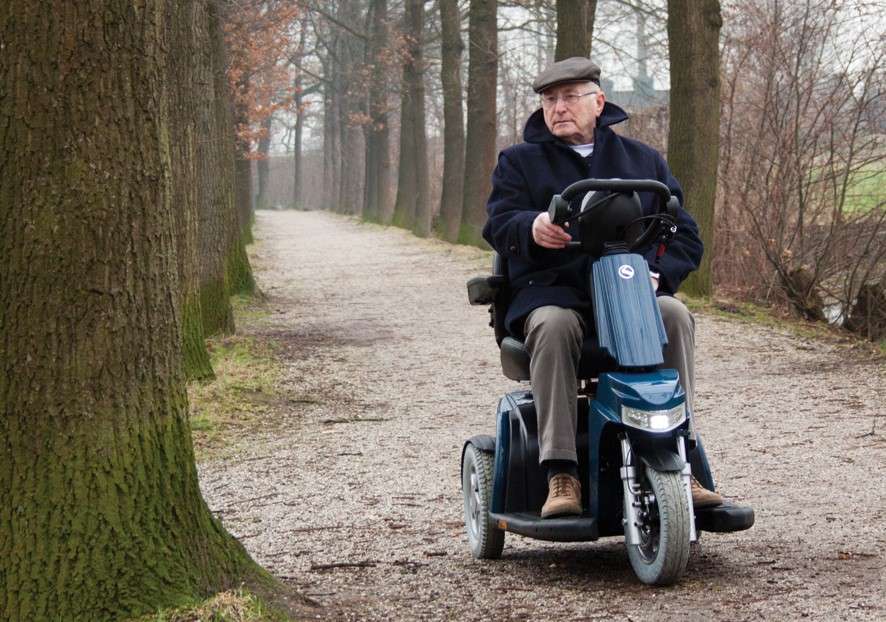
3-wheeled scooter
Maintenance and Servicing
It is widely recommended that you take care of your mobility scooter with regular servicing and repairs when needed.
Yorkshire Care Equipment offers complete servicing and maintenance for our mobility scooters. Our engineers know practically all you could possibly know about scooters, and we’re sure that they’ll be able to help out with any problems!
Summary
Mobility scooters are an investment, so making sure you get the right model is imperative. We hope that this guide has answered your questions regarding scooters and what’s on offer, but if it hasn’t, then please get in touch with us.
Alternatively, come and visit our Harrogate showroom so we can discuss your options and let you test drive the scooters we stock!
Visit Our Harrogate Showroom





